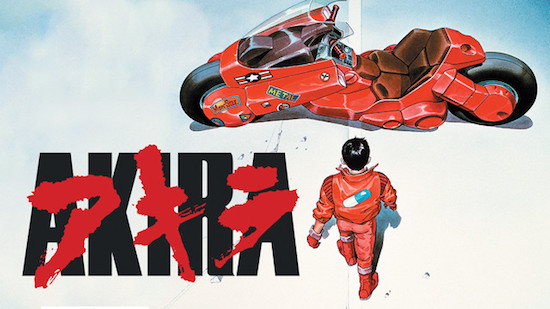Thirty years ago, I went to my local arthouse cinema to see a film all the culture and listings magazines had been making a major deal of. It was, they promised, a completely new kind of feature: an animation, yes, but not a comedy-adventure, or a children’s movie. It was a grown-up sci-fi action thriller from (get this) Japan, and it was going to blow your mind.
They were right, in a way. The claims to novelty might have been laughable to a few aficionados. But it was new to me, and to most other Western viewers. Anime and manga were, at that point, genuinely niche interests outside Japan; a small subset of indie comix fandom – itself still marginal – chiefly favoured by people who were early adopters of the Internet and liked affixing the word “cyber” to other words. They were genres whose aesthetic was more familiar to kids watching cheapo Japanese TV serials than to most people who fancied themselves in step with popular culture.
The film was to have a huge impact in the popularising of those forms, and indeed in shaping them thereafter. That’s a story better told by an expert in anime and manga, which I’m not. Coming back to Akira after all these years, what interests me is what I missed at the time; the broader context I didn’t possess.
Here’s what I remember about watching Akirain 1988, from the balcony seats where you were permitted to smoke – and, as long as you didn’t push your luck, and waited until the lights went down, they didn’t care what it was you smoked. It did indeed blow my (admittedly callow and hash-addled) mind. It looked and sounded like nothing I’d ever seen. It was long, yet insanely fast. It went by in a furious kinetic blur, alternated with slow, atmospheric passages of balletic grace. And by the end of it, I had no more of a clue what it was about than I had done at the start. It flummoxed the bejesus out of me.
I mean, I must have realised it was about the apocalypse. Not even somebody as young, silly and stoned as I recall myself being could have missed that. But the thing to bear in mind is that, in the 1980s, it was entirely normal for things to be about the apocalypse. Imminent apocalypse was something you lived with every day. The movies, and television, and even pop music were full of it. Even in our present age of terrors, nuclear annihilation is one, at least, that is no longer always at the forefront of our minds.
What I now grasp is that it was, and is, different in Japan. For the simple and very good reason that Japan was, and is – and we can only hope remains – the only nation to have actually experienced nuclear warfare.
Which is to say, the apocalypse is embedded deeply and traumatically in Japan’s collective cultural psyche – a proposition the film itself carries to the extreme of suggesting that the power behind it is part of not only race memory but biological memory, an evolutionary matter sourced far beyond myth or prehistory, in the origins of life itself. Akira opens, almost nonchalantly, with the apocalypse – or at least an apocalypse. A gravitational singularity (bearing a striking resemblance to a nuclear explosion) obliterates present-day (that is, 1988) Tokyo. Flash forward three decades, and Neo-Tokyo stands in its place. Stands? Towers. It is a megalopolis that dwarfs in scale, ambition and technology its predecessor; yet at its heart remains the gargantuan crater where that predecessor’s destruction began, a vast scar on its memory and conscience.
That minute or so of film reminds me that, when Japan was struck in 2011 by an earthquake-induced tsunami that killed many thousands, sent burning buildings floating wholesale into its flooded terrain, and induced a meltdown at the Fukushima nuclear plant, an arterial highway devastated by the quake was rebuilt and running within six days. Just as Japan knows apocalypse like nowhere else, so Japan does post-apocalypse like nowhere else. Post-apocalypse means like before, only more so: sleeker, bigger, faster. And, in the case of Akira, with its fatal failings magnified: more corrupt, more decadent, more brutal. There are no feral tribes fighting one another for fuel or mutant rat meat. There are biker gangs fighting one another for fun.
Akira’s antagonist, the hapless and insecure Tetsuo, is a member of one of these gangs (the Capsules; named, presumably, for their recreational preferences). He grows into an existential threat to Neo-Tokyo itself when, as an accidental consequence of a secret state programme to contain and control that ancient power, he comes to embody it. Tetsuo transforms into a monster; first metaphorically, and in due course, literally. He destroys anyone and anything that irks or impedes him, and he seeks revenge for the humiliation he has felt most keenly: that inflicted not by those who assailed him, but by those who indulged and protected him – above all, his childhood friend, the gang leader, Kaneda.
What dawns on me now, belatedly, is that Akira, for all its breathtaking novelty and technical brilliance, was very much in the tradition of the Japanese monster movie; a kind of sleek, high-end Kaijū – that genre of Godzilla and Mothra, predicated on the Japanese fear of atomic weapons – in which the “strange creature” is not a giant animal, but a wayward boy.
The Kaijū auteur Ishirō Honda saw at first hand the effects of those weapons when in 1946, as a former PoW on the way home from China, he passed through the ruins of Hiroshima. For him, the apocalypse was not an abstract matter. The film critic Richard Harland Smith has written of how Honda’s original and definitive 1954 iteration of Gojira “reflected deeper Japanese anxieties concerning responsibility, honor, culpability, and guilt.” These are also the themes that dominate Akira, whose creator, Katsuhiro Otomo, was born in the year of Gojira’s release – the same year that the crew of the Japanese fishing boat Daigo Fukuryū Maru were poisoned by radioactive fallout (“death ash”, as they called it) from an American hydrogen bomb test at Bikini Atoll. Radio operator Aikichi Kuboyam died from complications, meaning that the first victim of the hydrogen bomb, just like almost all the victims of the uranium and plutonium bombs, was Japanese.

Responsibility. Honour. Culpability. Guilt. Akira deals with these issues in remarkable depth, and at times with remarkable cynicism. It is difficult to tell where its sympathies lie, or if indeed it has any. If the film has a hero, it is Kaneda, who is feckless and self-seeking, but will risk anything to save his friends and the girl he falls for. Then there is Colonel Shikishima, the city’s military de facto ruler, who represents order. When he visits the deep, frozen chamber where the mysterious Akira is held, he delivers the film’s key speech: “They were too scared, so they hid it away from the public. They forgot all shame and honour, cast off the civilisation and science we had created, and shut the lid of the Pandora’s Box they themselves had opened.” He holds Neo-Tokyo in contempt – “a garbage heap made up of hedonistic fools,” he calls it – yet gives his all to defend it in the face of opposition from the vain, ineffectual, squabbling politicians who make up the national government, because that is his soldier’s duty. It is he who has charge of the research programme, led by Doctor Ōnishi, which aims to understand the psychic powers that destroyed the old Tokyo.
There is revolution in the air. A brave resistance movement, working against the debased government, proves to be the unwitting instrument of that government’s most venal member. A cult of anti-progress, anti-science mystics ecstatically anticipates the next apocalypse, only to find the reality as terrifying as everybody else does. The Doctor betrays both the Colonel’s trust and his orders, allowing Tetsuo to become uncontrollably powerful in order to gratify his own scientific preoccupations. Akira may be damning of politics and science, but it is harshly unsentimental about the supposed alternatives. Among these dupes, creeps and moral gnomes, the Colonel is a titan, both physically and ethically. Yet even a passing knowledge of Japanese history tells you where a fetishistic devotion to the idea of the military as the only true protectors of the people ends up. Thus it proves in Akira. The city falls; its people perish; our heroes, such as they are, survive. What, exactly, is the message here, the lesson? That loyalty to one’s companions is the only kind that matters? That some kind of original sin, represented by the enigma of Akira him/itself, dooms society no matter what? That if everybody just did in the first place what the big guy in the uniform says, we’d all be better off? I genuinely don’t know. I remain as confused on that question as I was first time around by the plot. At least I understand that, now.
I also understand just what an outstanding piece of cinema Akira is – how complex, exciting and disturbing. I see how its sources stretch from body horror (not until then a major factor in anime) to Stanley Kubrick, whose 2001: A Space Odyssey and A Clockwork Orange leave stylistic and thematic fingerprints upon it. How it took a fascination with quantum physics – at the time highly fashionable in creative circles, usually among people who had scarcely the barest comprehension of it – and made something genuinely substantial from it. It’s a stupendous achievement, one that more than lives up to its reputation. Perhaps its most notable attribute is this: that if you are an outsider who hopes to begin to understand the country that made it, you really ought to watch it.
Author’s note: In case you’re wondering, I viewed the Japanese-language version of the film with English subtitles for this article. Once an arthouse kid . . .


